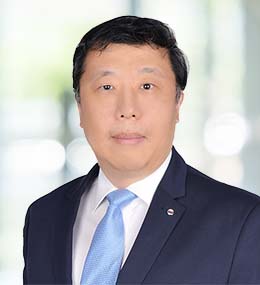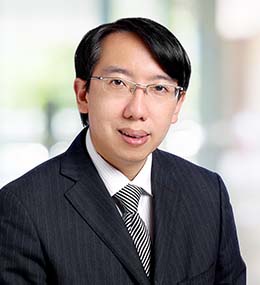Steady Hands in Asia Address Dynamic Markets
Steady Hands in Asia Address Dynamic Markets
Stout’s Asia-based managing directors discuss the region’s economic growth, M&A activity, sectors to watch, market complexities, and learnings from the U.S.
Political headwinds, trade tensions, and volatility are making many in the financial sector cautious about the future of global markets. However, transaction activity remains at or near peak levels as private companies look to maximize their value and private equity eagerly invests wherever good opportunities exist – whether at home or abroad.
In 2018, as part of Stout’s growing global presence, the firm opened new offices in Hong Kong, Shanghai, and Singapore. As part of this expansion in Asia, Stout also brought on board several experienced professionals who have the cross-cultural insight to navigate this dynamic environment. Leading the firm in the Pan-Asian region is industry veteran and Managing Director Larry Ma, who is based in Shanghai. Larry’s growing team of experts have rich experience in strategy development, cross-border merger and acquisition (M&A) advisory services, and private equity investment in China, elsewhere in Asia, and the U.S.
We spoke with Larry and Managing Directors Bruce Robinson (Shanghai), Gary Cheng (Hong Kong), Victor Tay (Singapore), and Arthur Lo (Singapore), for a candid discussion about current market dynamics in Asia, Sino-U.S. trade tensions, trends in cross-border activity, and the team’s shared history of living and attending university in the U.S.
What’s driving growth in Asia and, specifically, M&A transaction volume?
Larry: China has been the growth driver of the global economy for years as the country transitioned from a planned economy to a market-driven economy. China has embraced globalization and trade, educated its labor force, and created a culture for entrepreneurship and innovation.
The drivers of outbound M&A transactions in Asia are the acquisition of technology and know-how in developed countries, the acquisition of brands and/or intellectual property in developed countries, and access to customers and channels in global markets. Within Asia, M&A activity is driven by market consolidations in competitive sectors, business diversification and penetration, and capital market valuation arbitrage. Inbound M&A is fueled by Western companies expanding their reach and seeking opportunities in sizable and fast-growing consumer product markets and service sectors.
Bruce: In China, these dynamics are enabling a rising middle class representing at least 100 million people capable of purchasing a car or apartment or taking a foreign trip. The purchasing power of this population is significant. China has ranked as the world’s largest automotive market for the last nine years (28 million autos sold versus approximately 17 million sold in the U.S.) and the world’s largest source of spending on outbound tourism ($258 billion spent versus $135 billion that U.S.-based tourists spent).
Victor: In Southeast Asia, ASEAN[1] countries have the fastest-growing foreign direct investment (FDI) regime of all Asian countries – including China – at $200 billion versus $120 billion in China. This is again due to fast-growing middle-income earners seeking mass consumption and a young, vibrant workforce with an average age of 28 in Vietnam and 23.8 in the Philippines.
Gary: Demographic trends are also driving growth in the healthcare sectors of “super-aging” countries such as Japan, in which 25% of the population is over 65 years old. The aging populations in China, including Hong Kong, are not far behind. New segments in the pharma, biotech, and med-tech industries are emerging to serve this expanding community of elders.
How is the current political climate impacting global deal making?
Bruce: The Sino-U.S. trade war has had a negative impact on global deal making, as overall China-related M&A activity decreased by 42% in 2018. Outbound M&A flows of $105 billion landed China in the number-four spot behind the U.S. ($233 billion), Japan ($184 billion), and Canada ($116 billion). This is the first time since 2013 that Japan has finished ahead of China as the largest source of outbound M&A from Asia, albeit primarily on the strength of one large transaction (Takeda Pharmaceuticals’ acquisition of Shire). In addition to trade tensions, the slowdown in M&A from China can be attributed to the deleveraging of bank lending and lower capital flow of foreign currency, which have negatively impacted the private sector in China.
Larry: China continues to seek outbound transactions, albeit in a more disciplined manner regarding price and leverage and with a focus on industries that are more likely to receive government approval. Additionally, China has issued new 2019 policies to encourage FDIs in professional/consumer services and healthcare services sectors that will soon become available for up to 100% investment by foreign capital. China even encourages foreign-owned enterprises or Sino-foreign joint ventures to be listed on its stock exchange. We are hopeful that the U.S. and China will reach a trade agreement soon and that the current political climate between the two countries will transition to long-term cooperation.
Victor: Regarding the Sino-U.S. trade tension, Southeast Asia has seen renewed rigor in sell-side activity, as companies in the region with trade ties to both the U.S. and China have become strategic platforms for trade, transshipping, and access to markets hindered by trade barriers. There has been active Chinese acquisition activity in Singapore as a springboard toward the ASEAN, U.S., and European markets. Similarly, U.S.-based and European firms have been acquiring Southeast Asian corporations to access China’s market.
Gary: The healthcare sector has seen a shift toward Southeast Asia and India for M&A activity as China and U.S. tensions have continued to rise. For instance, in 2018, 154 Asian healthcare deals were completed, up from 141 deals in 2017. Key countries included India, Singapore, Indonesia, and Malaysia.
Arthur: It is expected even if the current Sino-U.S. trade war is resolved, such trade tensions will continue as the two world’s largest economies vie for leadership. Such ongoing Sino-U.S. trade tensions will lead to increased M&A opportunities for M&A firms that are well-positioned to serve U.S. and Asian clients. For example, many multinational corporations and large Chinese manufacturers will need to diversify their supply chain from purely large domestic Chinese factories and build up manufacturing capabilities in Southeast Asia to serve the U.S. market.
And as many of the original Asian Tigers (Singapore, Taiwan, Hong Kong, South Korea) and Southeast Asian economies retool their economies to focus on emerging technology trends, many of their core manufacturing companies may suffer from lack of scale as production shifted from them to China in the 1990s and early 2000s, Thus, large manufacturers can find ample targets to consolidate here in the region as they do this diversification exercise. The lower valuations and high cash flows of such companies here in Asia means such consolidation and diversification can be done at relatively lower prices than anywhere else.
How are national security issues and concerns impacting deal flow vis-a-vis the U.S., for example CFIUS [Committee on Foreign Investment in the United States] and FIRRMA [Foreign Investment Risk Review Modernization Act]?
Larry: The U.S. regulatory hurdle in receiving foreign investments, especially from China, has negatively impacted deal flow in Asia. Many Chinese companies have dropped their consideration of M&A opportunities in the U.S. for fear of being rejected by CFIUS or FIRRMA later in the process. Technology-related sectors have been especially affected by this sentiment and the new reality of regulatory challenges in the U.S.
Arthur: Building on Larry’s point, Chinese companies can no longer acquire technology in the U.S. However, the U.S. is not the only source of cutting-edge technology. In Singapore, A*Star – the Singapore government’s research and development (R&D) agency – is enabling significant R&D investment in leading sectors such as advanced manufacturing, artificial intelligence, biomedical and health sciences, and the digital economy. Its stated strategy is to commercialize only proven technologies, giving savvy buyers and investors opportunities to select and partner with companies with proven R&D results.
Bruce: Many Chinese companies are becoming more reluctant to pursue transactions that the U.S. government may consider national security issues, including some that may not have come to mind before the rejection of the Ant Financial/Money Gram transaction in January 2018, which was blocked by CFIUS. As Money Gram is a consumer-facing financial services company, on the surface, this appeared to be a nontechnological or “sensitive area” for foreign investment.
Victor: There have been discussions on CFIUS and FIRRMA regulations and restrictions that have slowed M&A deals originating from China. In 2019, we have seen a resurgence and stabilization of M&A transactions. We are seeing greater creativity and accelerated acquisitions across newer industries, including e-payment, e-wallet, bitcoin, and blockchain connecting markets across New York, London, Singapore, and Hong Kong. In Southeast Asia, the Monetary Authority of Singapore has taken the lead by providing a sandbox in which to test new markets, thus attracting a new community of investors and acquisitions.
What are the sectors to watch within Asia?
Victor: In Asia, we have seen rising trends across four segments: Gold (population growth), Silver (aging populations), Green (environmental), and Smart (technology). Gold pertains to cities with fast-growing populations and increasing procurement potential. Clusters of cities have also been forming mega-regions (such as the Pearl River Delta region in China) with increased consumption of food, e-commerce, and agriculture. They consider themselves net importers.
Silver denotes industries serving the aging populations of Japan, Singapore, and Hong Kong. In these regions, healthcare, insurance, pharmaceutical, and medical device sectors will see greater consumption. Green segments, such as environmental engineering industries, alternative energy, solar panels, biofuels, and agriculture, will also see growth. China is already the largest alternative energy adopter in the world. As cities are increasingly getting smarter, we have seen smart technology companies that focus on the Internet of Things (IoT), embedded devices, cloud computing, bitcoin, and blockchain being acquired and consolidating.
Larry: We are still very bullish in terms of M&A activity in Asia. Adding to Victor’s analysis, we should pay attention to intelligence, health, safety, and green-focused sectors. Intelligence-related sectors, such as semiconductors, industrial automation and IoT, and mobile Internet-enabled new economies, have been very active in venture capital financing and strategic M&A. Healthcare services, nutrition and supplements, medical devices, and biotech are growing quickly due to the rise of the middle class and increased health consciousness. Safety sectors such as food/drug and environmental safety are also gaining focus. Green sectors, including electrical and hydrogen-powered vehicles, waste-processing and recycling, and air and water pollution control, have been highly encouraged by the Chinese government.
Bruce: In developing markets, also look to established companies to help build infrastructure such as with banking, logistics, telecom, and consumer brands. In more developed markets, we will continue to see growth in technology, robotics, alternative energy, and specialty chemicals.
Gary: Like the U.S., digital health is coming to Asia. How the transformation occurs is being signaled by innovative firms from outside of healthcare, such as Tencent and Alibaba, moving into the healthcare space. New platforms to increase access are gaining traction in China with firms such as WeDoctor and Ping An Good Doctor. Investments in digital health in Asia, which were made primarily by China and India, totaled $6.3 billion in 2018.
What are Asia-based clients eager for in terms of U.S. opportunities?
Larry: Historically, Asia-based clients have preferred acquiring U.S. companies in distressed situations, as many of them wanted to acquire technology or brands that could be leveraged in their home markets in Asia. However, more and more Asia-based clients are now seeking technology-licensing or joint-venture approaches instead of acquiring distressed companies. On the other hand, Asia-based clients also wish to enter the U.S. market by acquiring businesses that could be a launch pad for growth. Thus, they are looking for companies with strong sales, distribution, or channel capabilities in the U.S. market.
Excluding sensitive sectors such as semiconductors, robotics, and artificial intelligence, interesting sectors for Asia-based clients include specialty chemicals (or new materials), precision industrial products (including auto components), pharmaceuticals and medical devices, clean-energy technology, and environmental protection-related technology.
Arthur: More important, what types of opportunities should U.S.-based clients be looking for here in Asia? The current trend of emerging new technologies outside of the U.S. and the need for supply chain diversification means there is both a need and opportunity for forward-thinking U.S. companies to gain advantage over their peers, as technology and production capacity can still be acquired at attractive prices.
Victor: While a vast amount of technology has originated from the U.S., China has been the origin of many creative technologies in addition to the world’s largest consumer market. Currently, we are seeing ASEAN countries serving as intermediaries and strategic bridging platforms that work with both the U.S. and China across technology exchanges and commodity trading.
How do you navigate the complexities of the Asian market?
Larry: First of all, cultural understanding is paramount. Asia consists of many countries with diverse cultural backgrounds. Our team has a strong local understanding of all regions. Second, we focus on key financial services markets where M&A is active. Our offices in Shanghai, Hong Kong, and Singapore provide us with a strong reach to M&A opportunities in Greater China and Southeast Asia.
Bruce: We encourage our clients to have a focused purpose with regard to their M&A or market-entry strategies. But more important, we assist with strong execution capabilities on the ground. The old adage of “a good strategy well-executed is much more effective than a great strategy poorly executed” is especially true in China, where frequent, unexpected changes on the ground require your team to quickly adapt.
Arthur: There are many family-owned companies in Asia that helped the Asian Tiger and Southeast Asian economies expand during the 1980s and 1990s. Many of these first- or second-generation founders are looking to exit, especially if no immediate successors exist or they require scale that only a larger strategic partner can provide. Many of these businesses are also cash-rich with solid operations in place and an openness to finding the right buyers. If buyers can build rapport with the owners, they will have a strong partnership for years to come. Our team has the experience and skills to help establish and build this rapport.
Victor: These family-related businesses have been pillars of growth and capitalization in a number of stock markets. Business ethics, family values, integrity, and culture remain of the most important essence in facilitating transactions across Asian regions.
What do U.S. corporations looking to do business in Asia need to understand from a cultural perspective?
Larry: As U.S. companies seek entry to markets in Asia, it is difficult for them to fully understand the needs of local consumers and customers, especially in service-oriented businesses. Thus, having a strong local partner to cooperate with is essential in Asia compared with other developed markets. U.S. corporations should be open to collaborating with local partners rather than seek absolute control. Adapting to fast-changing local regulatory and competitive environments is also essential.
Bruce: Not every business model or product can be directly transplanted to Asia. Often, something needs adjusting to accommodate local tastes and preferences. These insights can be gained by hiring and listening to local managers who understand the needs of local customers. Those outside of China also need to appreciate the sheer speed at which business is conducted here. The phenomenon of “China time” is real. Decision makers at international headquarters need to respond in hours and days, not weeks and months.
What do you remember the most about living and studying in the U.S.? How has your experience living/studying/working in the U.S. impacted how you approach your work today?
Larry: After earning my M.B.A. in the U.S., I worked in Singapore, the U.S., and Hong Kong for over 12 years before relocating back to China in late 2003. What I appreciate most from that experience is learning to cooperate effectively as a team with people from diverse cultures and backgrounds. I also gained a much better understanding of Western culture and ways of doing business, which allowed me to bridge gaps between Western companies and Chinese counterparts.
I often advise our Chinese clients to pay attention to legal documents and details, including standard reps and warranty clauses. I highlight the significance of respecting legally binding agreements. China is a relationship-driven business society, and many business people tend to use vaguely articulated agreements that can cause misunderstandings. I help Western clients navigate various types of compliance and noncompliance issues to move deals forward. Our strong knowledge of local practices and Western ways of compliance provide us with insight and the capability to avoid potential pitfalls and resolve issues.
Bruce: I was born and educated in the U.S. Prior to coming to China in 2005, I had an extensive investment banking career in New York and Boston from the 1990s to the early 2000s with firms such as Salomon Brothers, Citigroup, and Bank of America Securities. My experience advising North American-based multinational corporations gave me a great foundation to understand their concerns and how to help manage the execution and integration of M&A transactions outside of their home markets.
Arthur: I earned my undergraduate and postgraduate degrees at U.S. universities and have worked in almost every Asian country for a variety of companies, including U.S. and Chinese joint ventures. This gives me a unique perspective on how U.S. and Chinese companies operate. While books have been written on the topic, nothing beats working with a trusted advisor who has experienced these markets firsthand.
Victor: Studying in the U.S., the U.K., Australia, and Singapore gave me a Western-reasoning process in problem resolution. Starting my career in Asia with a strategy consulting firm provided a deep immersion into Asian relationship-based business collaborations. In later years, I worked across multinational corporations, governments, business chambers, universities, and nongovernmental organizations. These experiences have provided me with not only a unique blend of cultural knowledge but also the rare opportunity to experiment with both private and public organizational cultures.
Gary: I grew up in the U.S. for most of my young life and went to college and graduate school there. However, I have lived most of my adult life in Asia, having worked for over 30 years in healthcare. We are witnessing the quality of care rise across the board in Asia, and I believe this region will be the incubator for innovation over the next 20 years.
- The Association of Southeast Asian Nations, which includes Brunei, Cambodia, Indonesia, Laos, Malaysia, Myanmar (Burma), Philippines, Singapore, Thailand, and Vietnam.





